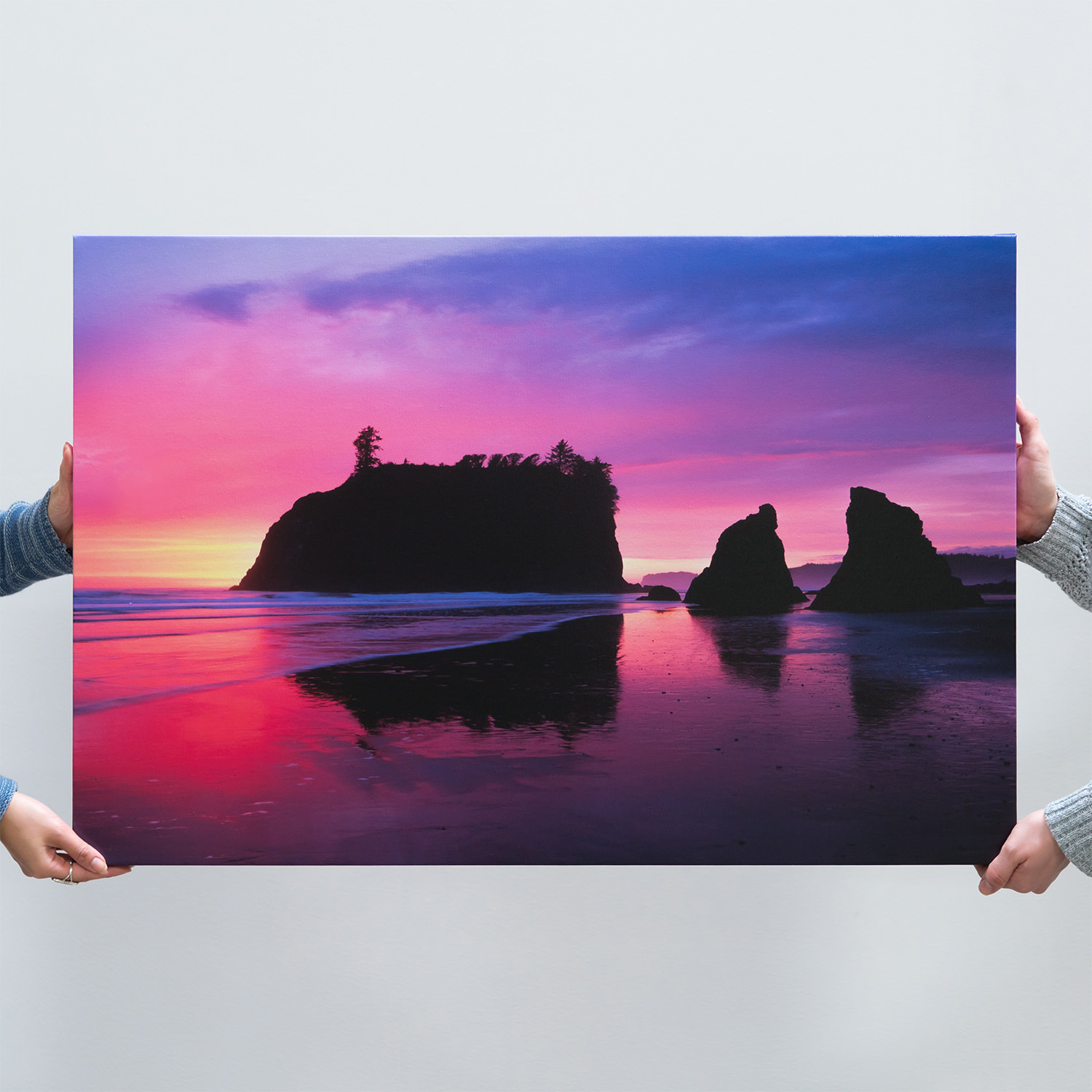Printing on canvas can be conditionally divided into several subspecies depending on the type of paints used.
Solvent ink printing. This version of dyes is based on mixtures of light hydrocarbons released during the processing or extraction of coal and oil raw materials. Solvent-based paints dry quickly and are highly resistant to prolonged exposure to direct sunlight. They are practically not washed off with water, resistant to negative climatic conditions, etc. This set of positive properties and relative cheapness make this type of inkjet printing a leader in the outdoor advertising industry, but they are not often used as interior printing, since the detailing in such printing is not the tallest. In general, high-quality solvent ink is completely safe. However, there are also dyes with impurities of harmful substances.

Since quality is always more expensive, the first ink option is not always used by standard printers. It is worth noting that even solvent inks with impurities are not so harmful as to have a real negative impact on the health of adults, if there is no direct contact with the paint. But, of course, such paintings should be hung with great care in children’s rooms or if there are pets in the room. Solvent-based ink penetrates the PVC layer and actually dissolves it, which makes the resulting image durable and unaffected by external influences. Colors in such printing practically do not fade even when exposed to direct sunlight or moisture.
Printing with water-soluble ink. Such paints are a solution of dye and water with the addition of special fixing additives. Prints made with water-soluble inks are distinguished by the highest quality of shades, transitions and colors, as well as overall brightness. However, such paintings should be taken care of very carefully, since moisture can irrevocably spoil the picture. In addition, images fade quite quickly, so printing with water-soluble ink is best suited for printing photos in an album with a canvas texture, as well as for creating the effect of an aged canvas.
Printed with pigment ink.
This print option is the highest quality and safest. The ink is a composition of water-insoluble pigment particles and special additives. Pigment particles have an approximate size of 0.1 microns, which makes it possible to make prints as clear, detailed and colorful as possible. The picture itself is very resistant to moisture and sunlight. When printed, pigment ink literally sticks to the surface of the canvas, but does not go deep into the fibers. Particles are also not subject to shedding. Therefore, this ink variant is used even for printing professional photographs and paintings for exhibitions, galleries and museums.

Printed with latex ink. This dye option is similar to pigment ink, but it contains a special polymer that is melted during the printing process. This allows you to create a protective coating in the form of a film on the surface of the canvas. These inks often print very large images. Latex ink is an eco-product, and therefore pictures printed in this way can be safely hung in any room, including a nursery.
Printing with UV or photopolymerizable ink.
Such dyes harden, or rather, literally eat into the web material under the influence of ultraviolet radiation. UV printing is an inkjet technology that is distinguished by its ability to reproduce the special saturation of colors, the brightness of colors and the accuracy of specifying tones. In addition, products printed in this way are resistant to grease and moisture, as well as sufficiently resistant to fading, abrasion and chemicals. UV ink is practically odorless, but if there is long enough contact with the skin, a skin allergic reaction can occur. Printing with such ink can be reproduced on any flat surface, including a roll-fed canvas in a printer.
Separately, we note that the quality of the ink completely depends on the brightness, clarity and quality of the printed canvas. Good ink is safe, has sufficient fluidity and strong adhesion to the surface of the canvas. At the same time, the flowing dye should not “walk” uncontrollably over the surface, but create exactly such a color “spot-dot” as planned. Incorrectly selected or low-quality ink will make the image fuzzy, visually blurry. In addition, the quality of color reproduction is directly determined by ink, and in order for the picture to be bright and juicy enough, you need to choose the best version of a branded dye from a trusted manufacturer.
